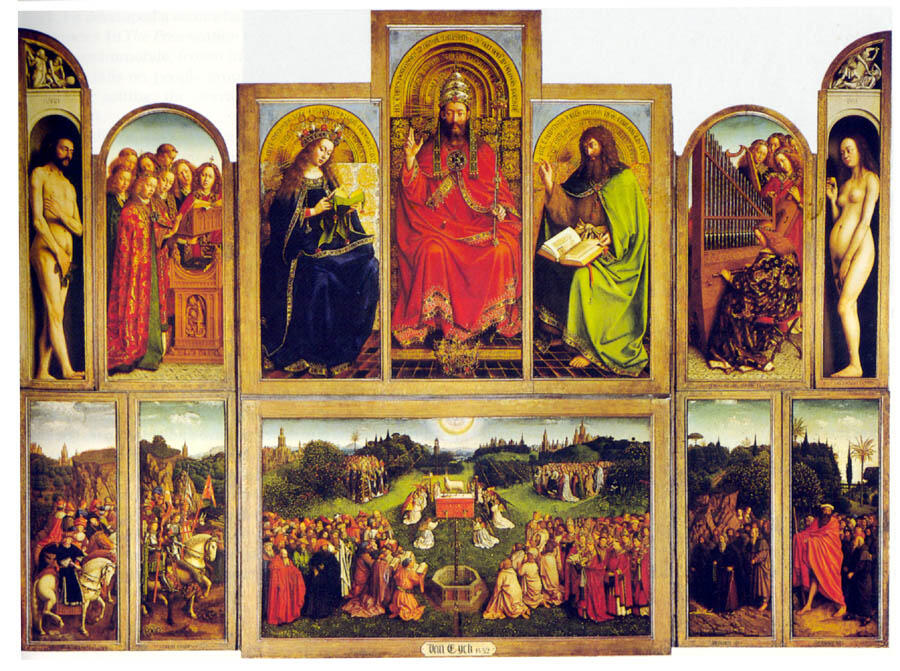
Introduction
The above shown painting is Jan Van Eycks “Ghent Alterpiece”. Many see this piece of artwork as a reflection of the community. There’s a picture of female – which is actually Eva; there’s male – which is Adam; there are the members of the church – the leaders and the followers; there’s the activities conducted inside and outside the church. But behind all these scenes or pictures are various stories which are also clear reminders how we humans act in a very humanly manner.
Main idea of the painting
First is Adam. He is in top most left part of the painting and he seems to be trying to hide his private parts. With this act, there is an implication that Adam has already a sense of malice with which he does not want others to see his private parts. His hands also show that he is a bit awkward with his present situation which is he is not wearing anything. He is also directly looking at the person who is at the far-end side from his – Eve.
Eve, situated at the top-most right hand corner is also not wearing anything. Unlike Adam, she seems not feeling awkward with her that, but there is one thing that can catch the onlookers’ attention. Eve seems to be pregnant in this painting. Her tummy is a bit bulgy (I think 2 or 3 months on the way).
Unlike other nude paintings (like the Italian nudes) this painting of Adam and Eve wearing nothing is not very harsh. The focus is not on the bodies nor on the private parts but on the silent “movement” of their hands, their facial expression and some highlights on the special aspects of their bodies (such as with Eve where her tummy is the focal point in her picture).
Separating Adam and Eve are the people from the church… the leaders of the church. There are the priests and the mother and father figures of the church. This signifies to me that as what is written in the Bible, God, the Creator, created man without any “malice” in their minds, but because Adam and Eve has committed the major sin – which is befallen themselves with the tricks of evils thus resulting to their consummation (proof is Eve’s pregnancy). But because God is so forgiving, He sent his apostles to try to amend things and help people who have committed sins.
The people in between Adam and eve are God’s apostles, the Father, the Mother and priests and other workers of the church. Below Adam and Eve and God’s miraculous workers are the mirror of the people of today. The scenes show people worshipping Him, spreading His words, doing penance for the sins committed and serving Him in any good and right way possible.
Eycks’s painting is more classical in approach. The faces are clear, the scenes and meanings of every scene are very clear to whoever might view this painting. Even the lines and colors used were incorporated very smoothly. There seems to be a huge number of colors and line combination used, but all of them are used in accordance to the scenes depicted in each area. The painting is very natural that it really reflects the people, the faces, the way people live, how the church relates to people and the community.
Conclusion
Indeed, this work of art is something to be seen and reflect upon. There are varied types of people shown and there are a lot of scenes depicted but looking at them in just one painting creates just one general impression to the viewers’ mind.
Work Cited
“Ghent Alterpiece”. 2006. Web.